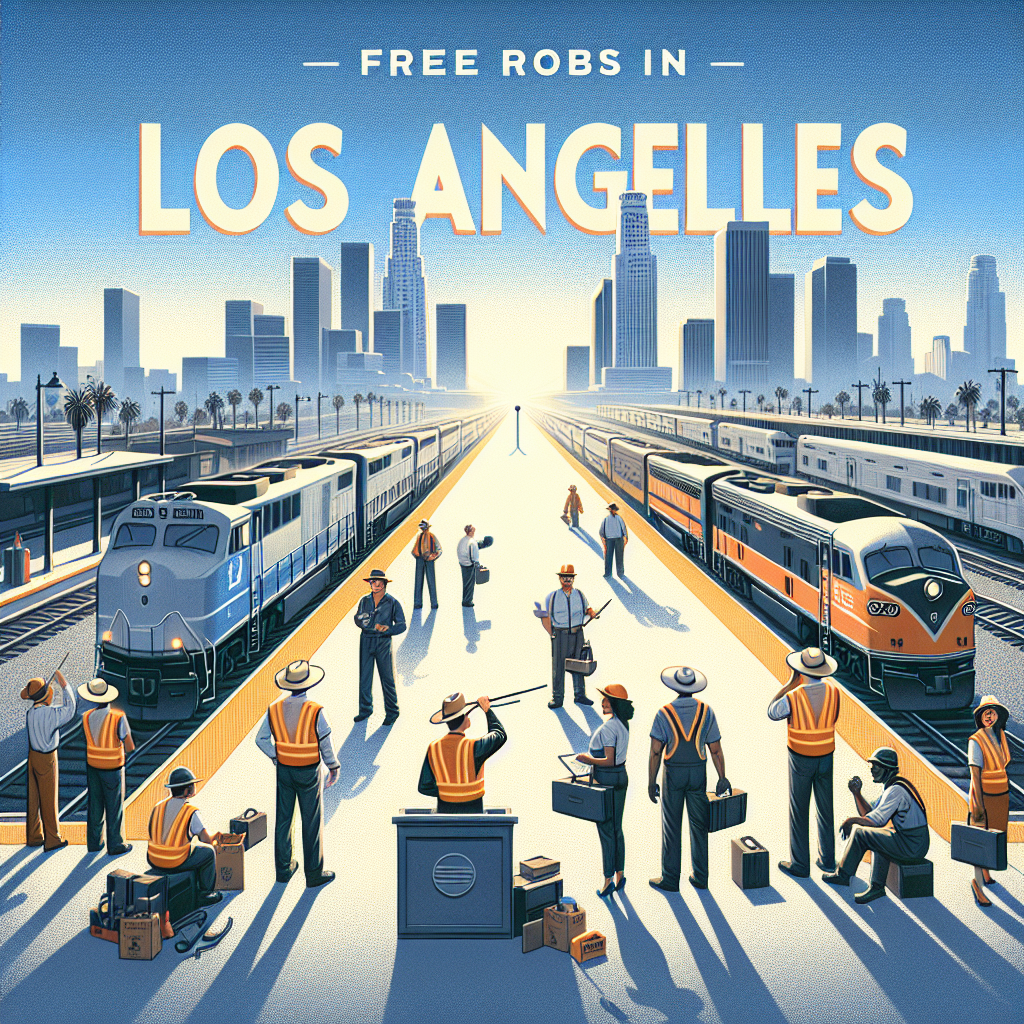Finding Free Railroad Jobs Los Angeles Resources and Insights can feel overwhelming if you’re new to the industry or searching for low-cost entry routes. This article pulls together practical leads, local hiring channels, and training options in the Los Angeles area so you can identify paid roles, volunteer opportunities, internships, and apprenticeships without paying for expensive placement services.
Free railroad employment resources in Los Angeles
Los Angeles is a rail hub with commuter services, port-related freight operations, and national carriers that hire locally. Start with transit agencies and Class I railroads’ career pages, community college programs, and union apprenticeship directories. For students or those balancing studies, check job boards and campus career centers as well — and if you’re still sorting where to look, this ultimate guide to job boards for college students in the USA (free and paid options) explains how to access free and low-cost listing sites that often include rail internships and part-time transit roles.
Where to look first
- Transit agencies and commuter rail: Metro (Los Angeles County Metropolitan Transportation Authority) and Metrolink often post maintenance, operations, and station roles.
- Class I freight railroads: BNSF, Union Pacific, and smaller short-line carriers hire locally for yard switching, track maintenance, and entry-level conductor roles.
- Rail unions and trade organizations: Unions publish apprenticeship openings and training opportunities; they can be a direct route into stable careers.
- Community colleges and vocational programs: Many offer railroad-related courses and certificates, plus job placement support.
- Job fairs and industry meetups: Regional transit hiring events and port workforce programs connect applicants with recruiters.
Typical entry-level roles and what they require
Entry positions frequently available in Los Angeles include locomotive hostlers, yard jockeys, track laborers, signal technicians’ assistants, and platform or station staff for commuter systems. Most of these roles require a high school diploma or GED, a drug screen, and passing a background check. Employers often provide on-the-job training; some technical roles require specific coursework or certifications such as safety training under Federal Railroad Administration guidelines.
Training, certifications, and free preparation
Look for free or low-cost training offered by community colleges, workforce development boards, and union apprenticeship programs. Many agencies offer the following without charge or with subsidized tuition:
- Basic safety and first-aid courses relevant to rail operations
- Signal and track maintenance introductory classes
- Apprenticeship placement exams and interview coaching
- Resume and interview workshops geared to blue-collar trades
Making applications stand out
When applying for rail roles in Los Angeles, highlight transferable skills: mechanical aptitude, punctuality, strong communication, safety awareness, and experience operating heavy equipment, even from other industries. Tailor each resume to mention any relevant training, rail-adjacent work (logistics, heavy equipment operation, warehouse operations), and willingness to work shifts or travel. For students and recent graduates, emphasize coursework, internships, and campus leadership that demonstrate reliability and teamwork.
Networking and follow-up
In-person networking at transit open houses, union information sessions, and job fairs can accelerate hiring. Reach out to local workforce centers and use their resume review and referral services. Follow up applications with polite emails or calls to the hiring office to confirm receipt and express continued interest — that personal contact can matter in operations-heavy roles where schedules change rapidly.
Industry outlook and a credible source
The rail sector continues to be a backbone of freight movement and commuter transport in Southern California, with steady demand for maintenance and operations staff. For details on occupational profiles, employment trends, and pay ranges, consult the Bureau of Labor Statistics overview for railroad workers, which provides authoritative career outlook data and role descriptions.
Bureau of Labor Statistics: Railroad workers occupational outlook
Quick checklist
- Search transit and railroad carrier career pages weekly.
- Apply to union apprenticeship and community college training programs.
- Attend local job fairs and transit hiring events.
- Use campus career offices or workforce centers for free application help.
- Keep certifications and background checks current to speed onboarding.
Frequently asked questions
Q: Do I need a commercial driver’s license (CDL) to start in rail?
A: Most entry-level rail positions do not require a CDL. Specific equipment operator roles may require specialized vehicle licenses or training, but many carriers provide internal training for those certifications.
Q: Are there paid apprenticeships in Los Angeles rail jobs?
A: Yes. Many union-run and employer apprenticeships are paid and include on-the-job training. Contact local union halls and transit career offices for current openings and application timelines.
Q: How can students balance rail work with classes?
A: Seek part-time station or support roles with flexible schedules, and use student-oriented job boards and campus career services to find employer-friendly shifts. The job board guide linked above can help students find positions that fit academic schedules.



